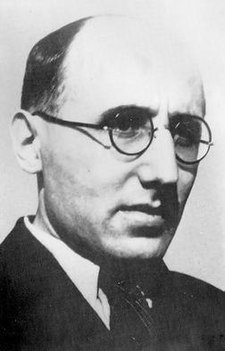There has been much discussion of this topic in the media recently as a result of the publication of the new book by
Steven Pinker. The main claim of the book, and the one that has generated most comment, is that violence - in wars, pogroms, slavery, genocides, murders, assaults and executions - has declined over time and that, relatively speaking, we live in a more peaceful and civilised age. The book then discusses the social and psychological reasons why this long term decline has taken place: how the 'better angels' of human nature (empathy, self-control, a moral sense and reason) have slowly exerted control over our inner demons. The claim is backed up with extensive graphs and tables that seek to show that, in proportionate terms, various wars or killings in past ages were more devastating and violent than any of the catastrophic wars or genocides of the twentieth century.
I struggle with the main claim, at least in so far as it relates to modern wars. Pinker may be right with his slightly odd comparative tables, which suggest for example that the First World War is only 16th in the table of historic atrocities (now headed by the An Lushan Revolt and the Mongol Conquests - see p.195). But surely in some way this misses the main point often made about twentieth century wars, which is that it is the peculiar combination of the advance in technological capacity and the genocidal ambition which makes contemporary wars and massacres so devastating. There may be less violence in absolute terms, but that does not tell us anything about the meaning of that violence.
 |
| Norbert Elias |
But what about the view from criminal law? Here we encounter the more modest claim about the long term decline of criminal violence. Here the argument is more credible and the conclusion less suprising in view of the fact that Pinker is drawing on the work of historians of crime which has pointed to the long term decline in the homicide rates, the decline in the acceptability of public violence, the growth of a more humanitarian sensibility in punishment and so on. Much of this work has been inspired by Norbert Elias'
The Civilising Process, and Pinker acknowledges his debt to Elias' work. Elias argued that the civilising process was a combination of two trends. On the one hand, there was the development of a new kind of psychological sensibility, illustrated by the growth of manners which changed the way that people acted in public and private. And on the other hand, the growth of states brought a pressure to towards peace and civility. In the sphere of crime, then, as individuals were learning to curb certain impulses towards violent behaviour, the state was simultaneously conducting campaigns against the carrying of weapons in public, duelling, forms of public brawling, excessive drinking and so on.
While this development is more uneven than a brief summary allows, the general conclusion that is drawn is that there is a more or less steady decline in forms of public and private interpersonal violence and in criminal activity. However, I do wonder if the picture is more complex - and that, even if we accept the broad thesis, it is not clear what this might mean.
One concern here is that it all depends on the definition of violence. These long term historical surveys tend to concentrate on homicide, as the most extreme form of violence - for this is where records are most complete. But violence can take many forms, and it is conceivable that as homicidal violence decreases, other forms of interpersonal violence or abuse might increase. And in the law the definition of violence has been expanding to include various forms of physical and mental abuse, psychic harm, attacks on identity (hate crime again), so that while there may be a long term decline in physical violence, the broadening definition of violence may actually mean that more conduct is criminalised. The outcome of this might even be that, paradoxically, as certain forms of overt violence decline the sense of insecurity, and hence the demand for criminal law, can increase.
This should also lead us to reflect on the role of the criminal law in this process. Has it contributed to the decline in violence? Doubtless criminal lawyers would like to think that it has, but the picture is a bit more ambiguous. Pinker's explanation says little about law directly. Human rights are viewed as having played a role in increasing awareness of certain wrongs and in framing disapproval of, and responses to, atrocities. And there are implicit legal values in the account of the state, of moral reasoning and of empathy. But as in Elias' account the criminal law plays a supporting role rather than being directly instrumental in bringing about social change. This might do violence to many criminal lawyers' understanding of the importance of their discipline, but should also encourage a sense of perspective in thinking about what can, and cannot, be achieved through the criminal law.
 Though coming just too late for Christmas stockings, I would like to recommend The Structures of the Criminal Law, the second book in the Criminalization series from Oxford University Press. (As one of the editors I have to declare an interest). The contributors take on the project of developing new approaches to criminalisation - some of the themes of which have been addressed in this blog. The term 'structures' is used here as a way of grouping together certain themes: how the law is structured (offence/defence, actus reus/mens rea) and whether this can or should inhibit trends in criminalisation; the relation between legal and political structures; and how the law is itself structured by the social and political imagination. This is somewhat broader than the normal understanding of the term in legal thought, and the essays correspondingly range over a wider range of topics than might be expected - but this only makes the collection more interesting and diverse.
Though coming just too late for Christmas stockings, I would like to recommend The Structures of the Criminal Law, the second book in the Criminalization series from Oxford University Press. (As one of the editors I have to declare an interest). The contributors take on the project of developing new approaches to criminalisation - some of the themes of which have been addressed in this blog. The term 'structures' is used here as a way of grouping together certain themes: how the law is structured (offence/defence, actus reus/mens rea) and whether this can or should inhibit trends in criminalisation; the relation between legal and political structures; and how the law is itself structured by the social and political imagination. This is somewhat broader than the normal understanding of the term in legal thought, and the essays correspondingly range over a wider range of topics than might be expected - but this only makes the collection more interesting and diverse. 

























